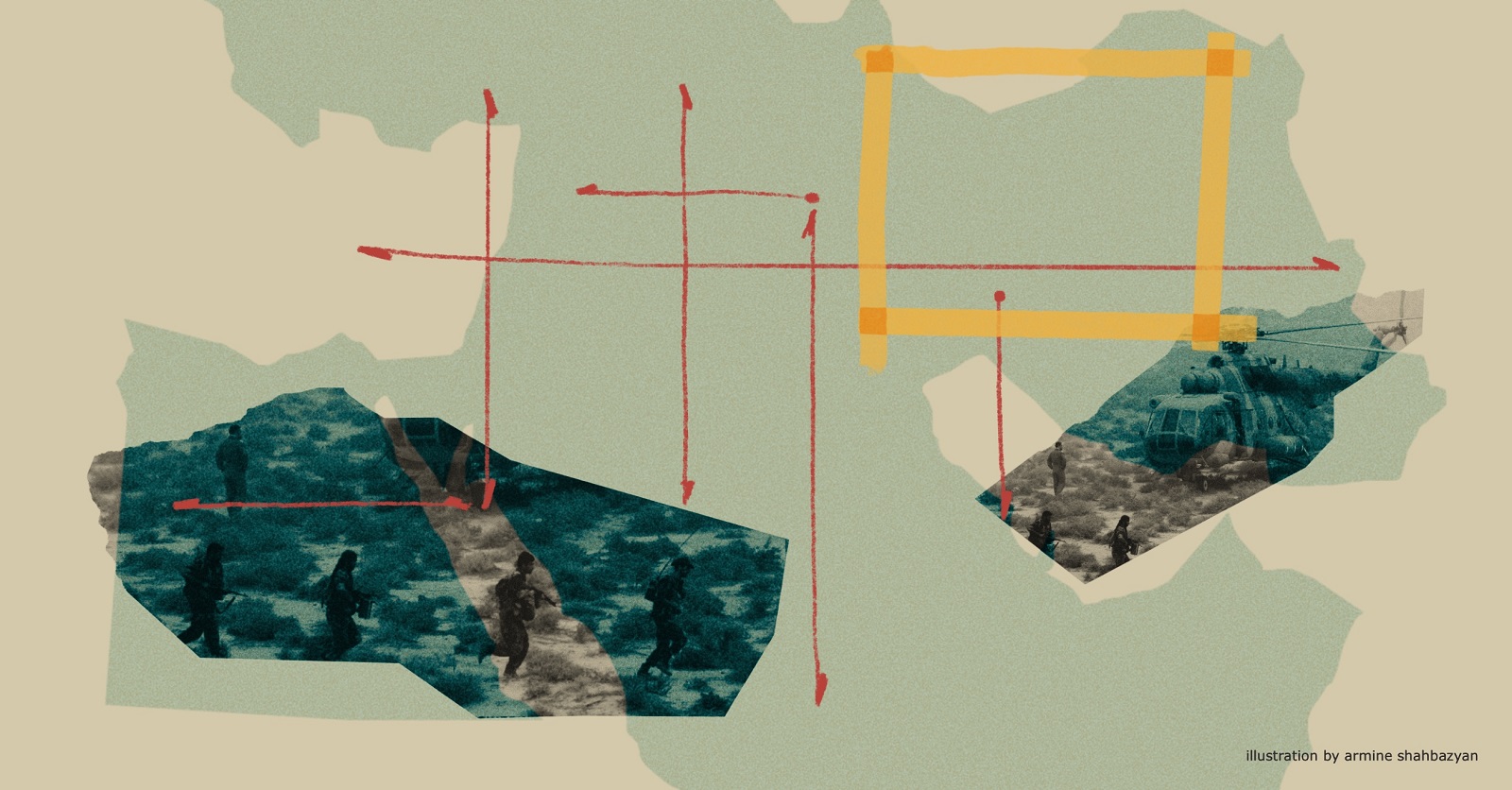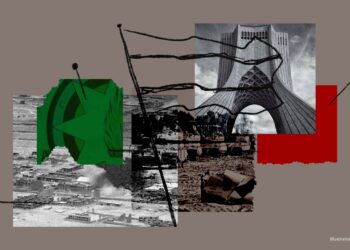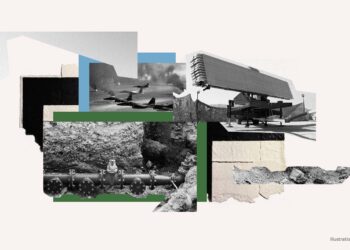
Listen to the article.
Scarred by the devastating eight-year war with Saddam Hussein’s Iraq (1980-1988), Iran has sought to build its national security architecture through acquiring nuclear weapons and a network of alliances with entrepreneurs of violence of varying loyalty. The aim: to keep threats beyond its borders. However, what Iran and its proxies call the “Axis of Resistance” has been severely shaken by Israel’s strategic patience and sustained efforts. Israel has managed to neutralize Hamas, Lebanese Hezbollah and even Iran’s president—the presumed successor to Supreme Leader Ali Khamenei. Officially, however, the helicopter accident theory remains the only accepted explanation with no credible sources supporting theories of an Israeli-orchestrated assassination.
Until the Hamas attack of October 7, 2023, Iran showed no inclination to radicalize against the “little Satan” (an anti-Zionist term used by Iranian leaders to refer to Israel). In fact, the opposite was true. Tehran’s strategy of economic development, aimed at establishing good relations with its 15 direct neighbors, demonstrates this. This detente strategy, set against a backdrop of domestic crisis and rising protest, is reminiscent of the “zero problems with neighbors” policy developed by Ahmet Davutoglu, former Turkish Foreign Minister and Erdogan’s diplomatic adviser.
In its immediate regional environment, Iran has strengthened bilateral relations with Iraq’s autonomous Kurdistan region and the Taliban regime in Kabul. Additionally, it has engaged with Azerbaijan, which poses a major security challenge to Tehran due to its strategic partnership with Israel and its annexationist ambitions against neighboring Armenia.
During the Obama administration between 2013 and 2015, the United States opted for direct negotiations with Tehran on nuclear issues, much to the dismay of the Gulf petro-monarchies. These monarchies were particularly worried about the Islamic Republic’s rapidly expanding military programs, which had seen a significant increase in missile and drone arsenals, alongside the growing regional influence of Iran’s religious leaders.
It was not until March 10, 2023, that China—a trading partner of both Saudi Arabia and Iran—achieved a diplomatic breakthrough. In Beijing, China announced the restoration of diplomatic relations between Riyadh and Tehran, ending a seven-year hiatus. This break had been triggered by an attack on the Saudi embassy in Tehran in 2016, a retaliation for the execution of Shiite cleric Nimr Baqer al-Nimr by Saudi authorities. For China, this diplomatic success served two purposes: it scored a point in its rivalry with Washington and implemented a balanced approach between the leading Shiite power and its Sunni rival—the latter embroiled in Yemen’s conflict against an Iranian-backed militia.
The war in Ukraine has increased Iran’s dependence on the Sino-Russian tandem, despite diverging interests on Syrian matters. Ali Khamenei, the 85-year-old Supreme Leader of Iran favors stronger economic and military ties with Moscow and Beijing. In 2024, Iran officially joined the BRICS group of emerging economies (Brazil, Russia, India, China and South Africa), along with Egypt, Ethiopia, Saudi Arabia, and the United Arab Emirates (UAE). Previously, in July 2023, Iran became the ninth permanent member of the Shanghai Cooperation Organization (SCO). This dynamic expansion, benefiting China, also includes other Middle Eastern players such as Qatar, Egypt, Bahrain, Kuwait, Saudi Arabia and the UAE.
Israel’s Calamitous Actions in Gaza
Let’s be clear: Iran did not endorse Hamas’s bloody raid. Hamas informed Tehran only at the last moment. This set a new mechanism in motion in Tel Aviv. The strategy became twofold: first, eliminate the Mullahs’ zealous guards, then strike at the heart of the regime. Israel implemented this new approach after October 7, starting in Syria. Previously, Israeli military operations in Syria had mainly targeted Iranian proxies. However, on December 25, 2023, the assassination of Sayyed Razi Mousavi, a high-ranking Iranian general, in Damascus marked a new stage in Israeli military strategy. The direct targeting of Revolutionary Guard personnel in Syria continued beyond 2023.
In April 2024, Israeli aircraft attacked the Iranian consulate in Damascus. This strike killed General Mohammad Reza Zahedi, commander of the Quds Force overseeing Syria and Lebanon, along with six other military personnel, including his deputy Mohammad-Hadi Haji-Rahimi.
According to French Iran specialist Clément Therme, this operation aligned with Israeli objectives: targeting pro-Iranian forces present in Syria for a decade. But, the researcher notes that this marked the first Israeli assault on an Iranian diplomatic building. This military operation signaled a shift in the conflict’s rules of engagement. On April 1, Israel wasn’t targeting arms deliveries to Hezbollah or pushing Iranian-backed proxies beyond its borders. Instead, the sole aim was to eliminate Iranian “military advisors” in Syria.
Consequently, Iran could no longer rely solely on its allies to respond, as its credibility was at stake. The Revolutionary Guard’s air force led Iran’s military response against Israel from its own territory. Iranian sources claim they launched 13 missiles, with seven hitting the Nevatim military intelligence base and the Ramon air base on April 13-14. This was enough to worry regional Sunni Arab countries but insufficient to inflict serious damage on Israel. Yet, over the past five years, the strike capacity of drones and other undetectable devices has grown exponentially, as evidenced by the targeting of the Israeli Prime Minister’s residence at Caesarea, central Israel.
Who Can Work Toward De-escalation?
Iran, embroiled in an unwanted war of attrition, has seen its prestige erode among both allies and regional adversaries—the latter now engaged in a process of normalization with Israel.
In this context, only Oman and Qatar have a vested interest in mediating between Iran and the United States to prevent a potentially catastrophic regional conflict.
In 2023, Oman hosted several rounds of indirect talks between the U.S. and Iran. It played a pivotal role in a prisoner exchange between the two countries, and facilitated the transfer of $6 billion in Iranian funds from South Korea to Qatar in September 2023.
For years, Oman has been deploying diplomatic efforts—as dense as they are discreet—to bring Washington and Tehran closer together. Meanwhile, Qatar has a vested interest in ensuring stability in the Persian Gulf to safeguard its gas exports.
The UAE plays a key role in circumventing unilateral Western economic sanctions against Tehran, a geostrategic factor crucial to its survival. This is largely due to Dubai’s platform, where Iranian companies flourish. Total trade between the UAE and Iran reached $24 billion in 2022-2023, surpassing the peak of $22 billion in 2012 (before the tightening of U.S. and European sanctions against Iran). The UAE is thus Iran’s second largest trading partner, after China.
On the political front, the UAE has yet to return its ambassador to Iran, underscoring ongoing friction over the islands of Tunb and Abu Musa. These islands, claimed by Abu Dhabi but occupied by the Iranian army for over 50 years, remain a source of recurring diplomatic tensions. This territorial dispute could potentially hinder the development of trade links between the UAE and Iran.
Iraq presents another challenge, primarily economic. The supply of foreign currency (US dollars) and the smuggling of products banned by U.S. sanctions through Iraqi territory enable the re-export of Iranian oil and gas.
The situation is complex, as Iran operates 28 fields with its neighbors, including Iraq, Saudi Arabia, Kuwait, Qatar, and the UAE. Tehran’s lag in hydrocarbon technology largely stems from its difficulty attracting foreign investment to modernize its infrastructure. According to the United Nations Conference on Trade and Development (UNCTAD), Iran attracted just $1.5 billion in foreign direct investment (FDI) by 2022. Official Iranian figures indicate around $5 billion in 2023. These amounts are significantly smaller compared to the capital attracted by the UAE (22.5 billion in FDI in 2022), and Saudi Arabia, which was promised $21 billion in investments in the same year as part of its ambitious Vision 2030 project.
The new Iranian president states that Iran requires $200-$250 billion in investment. However, the country’s total available capital is less than $100 billion in FDI. Tehran therefore needs to attract a further $100 billion in FDI. Supreme Leader Ali Khamenei has set a target of 8% growth in gross domestic product (GDP). This growth would reduce unemployment and inflation by boosting domestic production.
Deterrence Still Intact
At present, all indications suggest this objective remains far from achievable. The West shows no inclination to lift its sanctions, and Iran continues to be viewed as a pariah state—not only due to its nuclear program but also because of its support for militias and political-military movements in Iraq, Syria, Lebanon, Gaza and Yemen, which contribute to destabilizing world trade. This mistrust has been compounded by Iran’s strengthened partnerships following October 7. Iran has supplied missiles to Russia in its war with Ukraine and is growing increasingly reliant on Moscow and Beijing, with whom it shares a rejection of American hegemony—a stance reinforced by its recent BRICS membership. Tehran is also eyeing Central Asia—Russia’s backyard and a zone of Sino-Russian rivalry—to develop cooperation programs with Persian-speaking Tajikistan, as well as with neutral Turkmenistan and Uzbekistan.
It’s crucial to remember that Iran, in its fight for survival, is willing to impact not only its own embargoed oil wells but also those of its Arab neighbors. The Gulf’s oil and gas terminals lie within reach of Tehran’s multiple relays in the region. This was demonstrated on September 14, 2019, when attacks on the Saudi refineries of Abqaiq and Khurais slashed the kingdom’s production by 60%—promptly triggering a 15% spike in crude oil prices on the NASDAQ in just one day.
In the South Caucasus, Iran has repeatedly voiced its opposition to the planned offshore corridor linking Azerbaijan to its exclave of Nakhichevan via Armenia. This project, supported by both Turkey and Russia, undermined trust between Iranians and Russians. For Iran, it’s a matter of national security. Questioning its 42-kilometer common border with Armenia—a country with which it enjoys excellent relations—would encourage Iran’s encirclement by the Turkish-Azerbaijani pan-Turkist alliance, reinforce the irredentism of Iran’s Azeris (who outnumber their Azerbaijani compatriots two to one) and play into Western powers’ strategy to contain Tehran.
But does Iran have the means to dissuade its adversaries? Cornered, Iran could prove unpredictable by changing its strategy. Since the end of the Iran-Iraq War, Iran’s power has manifested in asymmetrical conflicts. A weakened Iran could be potentially dangerous for Azerbaijan—a country with a Shiite majority governed with an iron fist by a secular pan-Turkist government. Iran accuses Azerbaijan of usurping the name of its northern province in 1918 and now considers it an Israeli proxy.
Also see
Transformations in Western Asia May Begin From Tehran
As the Middle East stands at the crossroads of a potential clash between regional powers, this article explores Iran's complex relationships with Hezbollah, Israel, and Azerbaijan and considers how these dynamics may reshape stability and power across Western Asia.
Read moreIran Challenges Russia’s Stance on the “Zangezur Corridor”
Remarks made by Russia’s Foreign Minister Sergei Lavrov in Baku on August 19 triggered a wave of strong reactions from Iran, underscoring the conflicting views Moscow and Tehran hold on a key regional issue.
Read moreAzerbaijan-Israel Relations: Implications for Armenia
The deepening alliance between Azerbaijan and Israel carries significant implications for Armenia, notably Azerbaijan's considerable acquisition of advanced Israeli weaponry which it has extensively employed against Armenian forces in the past decade.
Read moreIran’s Experimental Policies in the South Caucasus
Relations between Azerbaijan and Iran deteriorated following the 2020 Artsakh War. Did the visit of Iran’s Foreign Minister to Baku in July 2023 succeed in resolving existing differences? Or should ongoing tensions between Baku and Tehran be anticipated?
Read more








